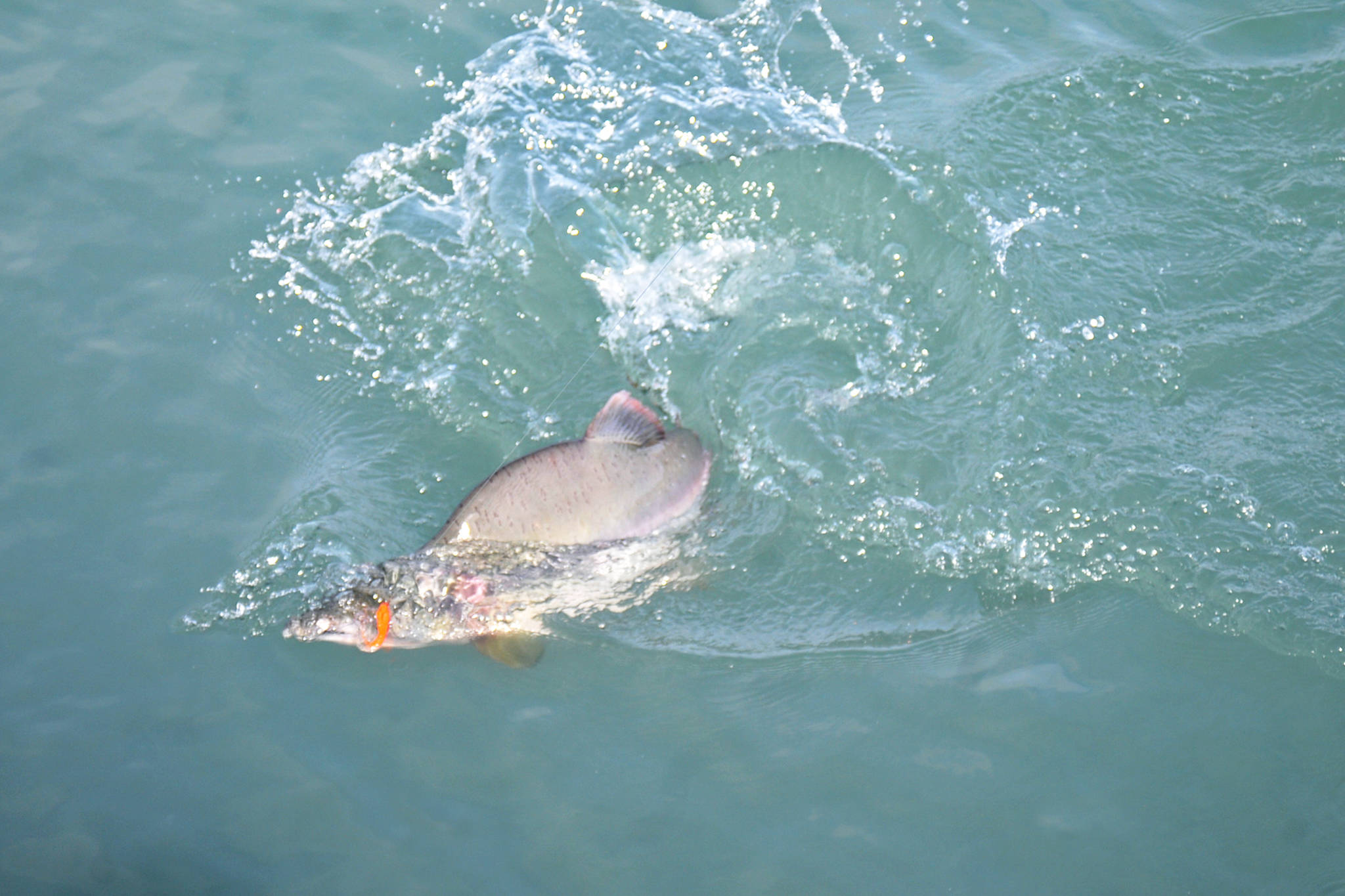Commercial fishermen across the Gulf of Alaska might finally receive some checks from the federal government after the pink salmon disaster in 2016.
The most recent federal budget continuing resolution — which funds the government up through March 23, 2018 — includes $200 million for fisheries disasters declared by the Secretary of Commerce in 2017. Gov. Bill Walker requested the declaration in October 2016 and Secretary of Commerce Penny Pritzker declared the disaster in January 2017.
The $200 million will be divided up among all the fisheries that received disaster declarations in 2017. That includes nine different disasters, all along the West Coast, as well as those in the fisheries of Florida, the U.S. Virgin Islands and Puerto Rico that happened as a result of hurricanes Irma and Maria in September 2017. The funds will remain available until spent, according to the budget resolution.
The National Oceanic and Atmospheric Administration, which oversees the National Marine Fisheries Service, is still working on funding allocation, said NOAA spokesperson Kate Brogan in an email.
“NOAA is still assessing this issue internally and will make the determinations for allocation as soon as possible,” she said.
Republican Alaska senators Lisa Murkowski and Dan Sullivan said in a press release issued Feb. 9, shortly after the passage of the budget continuation bill, that the areas eligible for relief funding include Prince William Sound, Kodiak, Chignik, Lower Cook Inlet, Yakutat, South Alaska Peninsula and Southeast Alaska.
“The 2016 pink salmon season was a disaster for our coastal communities, fishing families, and other fisheries related businesses,” Sullivan said in the press release.“= “This emergency aid was a long time coming, and I thank my Senate colleagues for working with Senator Murkowski and I to address this pressing issue. Going forward we’ll work with NOAA and the affected communities to make sure the dollars are put to good use.”
The Department of Commerce can declare a fishery disaster when the Secretary of Commerce finds that a failure in a commercial fishery is due to natural, undetermined or man-made causes beyond the control of the fishery managers other than regulatory restrictions for human or marine protection. A governor or politically appointed representative of a fishing community can submit a request for a disaster declaration and the Department of Commerce evaluates the information to make a decision.
Once funds are appropriated, they can be distributed to an eligible entity, according to NOAA. The total amount distributed to individual areas or fishermen depends on the value of the fishery and, under the Magnuson-Stevens Fishery Conservation and Management Act, can only cover 75 percent of the cost of the activity. Charter fisheries are not eligible, according to NOAA.
A state agency or interstate commission can work to develop a spending plan and grant proposal to NOAA to obtain funding.
Summer 2016 saw disastrous pink salmon returns across the Gulf of Alaska. In Prince William Sound, fishermen caught about 12.9 million pinks, one of the lowest catches in the last 20 years, according to the 2016 season management summary for the area. Kodiak saw similarly low harvests and exvessel values for pink salmon, with the wild pink salmon harvest coming in at about 17 percent of the projected harvest. Through September 12, 2016, Lower Cook Inlet fishermen had harvested about 97,000 pink salmon, about 13 percent of the forecast for that year.
The Department of Commerce’s determination attributes the low returns to a “variety of factors outside the control of fishery managers to mitigate, including unfavorable ocean conditions, freshwater environmental factors, and disease.”
Delays between fishery disaster declarations and disbursement of funding are not uncommon. After the 2011–2012 Chinook salmon disasters were declared, it took until January 2014 for funding to be solidified and distributed. $1.1 million was distributed to Cook Inlet set gillnet fishermen and sportfishing guides and $700,000 to processors, according to NOAA.
Reach Elizabeth Earl at elizabeth.earl@peninsulaclarion.com.

